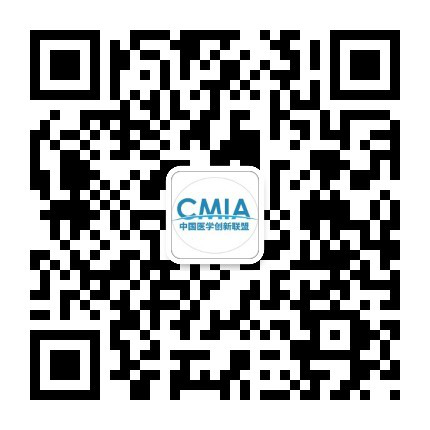【罂粟摘要】静脉麻醉胃镜检查过程中鼻面罩和传统鼻氧管的比较:一项随机对照试验
关注罂粟花,共同学习麻醉最新文献!
静脉麻醉胃镜检查过程中鼻面罩和传统鼻氧管的比较:一项随机对照试验
贵州医科大学 麻醉与心脏电生理课题组
翻译:潘志军 编辑:马艳燕 审校:曹莹
摘要
背景:在静脉麻醉下进行胃镜检查时可能会出现低氧血症。这项随机对照试验的目的是评估与传统鼻氧管相比,在静脉麻醉下进行胃镜检查时,使用鼻面罩辅助给氧是否能降低低氧血症的发生率。
方法:共有纳入574名拟在静脉麻醉下进行胃镜检查的患者,并随机分配接受鼻面罩或传统鼻氧管辅助给氧。主要结局指标是低氧血症的发生率。次要结局指标包括严重低氧血症的发生率、低氧血症持续时间、最低氧饱和度、紧急气道管理比例、手术时间、恢复时间、麻醉医生和胃肠科医生的满意度以及其他不良事件(包括咳嗽、打嗝、恶心和呕吐、反流、误吸和喉痉挛)。
结果:共565名患者纳入分析:其中282名患者为鼻氧管组,283名患者为鼻面罩组。鼻面罩组低氧血症的发生率(18.0%)低于鼻氧管组(27.7%;相对风险[RR]=0.65;95%置信区间[CI],0.48–0.89;P=0.006),鼻面罩组的低氧血症持续时间中位数为18.0秒(四分位间距,10.0–38.8),鼻氧管组为32.5秒(20.0–53.5)(中位数差异–14.50;95%CI,−22.82至−1.34; P=0.047)。鼻面罩组需要紧急气道管理的患者比例(8.8%)明显低于鼻氧管组(19.1%;RR,0.46;95%CI,0.30-0.73;P<0.001)。两组之间其他不良事件的总发生率无差异(鼻面罩20.8%;鼻插管17.0%;RR 1.23;95%CI 0.87-1.73;P=0.25)。从麻醉医生和胃肠科医生的角度来看,对鼻面罩的满意度都高于鼻氧管(鼻面罩96.1%,鼻氧管84.4%;RR,1.14;95%CI,1.08–1.20;P<0.001)、(鼻面罩95.4%,插管81.9%;RR,1.17;95%CI,1.10–1.24,P<0.001)。两组之间严重低氧血症的发生率、最低氧饱和度、手术时间或恢复时间无显著差异。
摘要
结论:鼻面罩给氧降低了静脉麻醉下胃镜检查麻醉期间低氧血症的发生率。
原始文献来源:Dong Xu Chen,Hui Yang, Xi Ping Wu,e al.Comparison of a Nasal Mask and Traditional Nasal Cannula During Intravenous Anesthesia for Gastroscopy Procedures: A Randomized Controlled Trial [J]. (Anesth Analg 2022;134:615–23).
英文原文
Comparison of a Nasal Mask and Traditional Nasal Cannula During Intravenous Anesthesia for Gastroscopy
Procedures: A Randomized Controlled Trial
CBACKGROUND: Hypoxemia can occur during gastroscopy under intravenous anesthesia. The aim of this randomized controlled trial was to evaluate whether oxygenation using a nasal mask can reduce the incidence of hypoxemia during gastroscopy under intravenous anesthesia compared with a traditional nasal cannula.
METHODS: A total of 574 patients scheduled for gastroscopy under intravenous anesthesia were enrolled and randomly assigned to receive either a nasal mask or a traditional nasal cannula for oxygenation. The primary outcome was the incidence of hypoxemia. The secondary outcomes included the incidence of severe hypoxemia, duration of hypoxemia, minimum oxygen saturation, the proportion of emergency airway management, length of procedure, recovery time, and the satisfaction of the anesthetist and gastroenterologists as well as other adverse events (including cough, hiccups, nausea and vomiting, reflux, aspiration, and laryngospasm).
RESULTS: A total of 565 patients were included in the analysis: 282 patients in the nasal cannula group and 283 patients in the nasal mask group. The incidence of hypoxemia was lower in the nasal mask group (18.0%) than in the nasal cannula group (27.7%; relative risk [RR] = 0.65; 95% confidence interval [CI], 0.48–0.89; P=0.006), and the hypoxemia lasted a median of 18.0 seconds (interquartile range, 10.0–38.8) in the nasal mask group and 32.5 seconds (20.0–53.5) in the nasal cannula group (median difference –14.50; 95% CI, −22.82 to −1.34; P=0.047). The proportion of patients requiring emergency airway management was significantly lower in the nasal mask group (8.8%) than in the nasal cannula group (19.1%; RR, 0.46; 95% CI, 0.30–0.73; P <0.001). No difference was found in the overall incidence of other adverse events between the 2 groups (nasal mask 20.8%; nasal cannula 17.0%; RR, 1.23; 95% CI, 0.87–1.73; P=0.25). Satisfaction was higher with the nasal mask than with the nasal cannula from the perspective of anesthetists (96.1% for nasal mask versus 84.4% for nasal cannula; RR, 1.14; 95% CI, 1.08–1.20; P <0.001) and gastroenterologists (95.4% for mask versus 81.9% for cannula; RR, 1.17; 95% CI, 1.10–1.24; P <0.001). There were no significant differences in the incidence of severe hypoxemia, minimum oxygen saturation, length of procedure, or recovery time between the 2 groups.
CONCLUSIONS: Nasal mask oxygenation reduced the incidence of hypoxemia during anesthesia for gastroscopy under intravenous anesthesia.
不感兴趣
看过了
取消
不感兴趣
看过了
取消
精彩评论
相关阅读





 打赏
打赏


















 010-82736610
010-82736610
 股票代码: 872612
股票代码: 872612




 京公网安备 11010802020745号
京公网安备 11010802020745号


